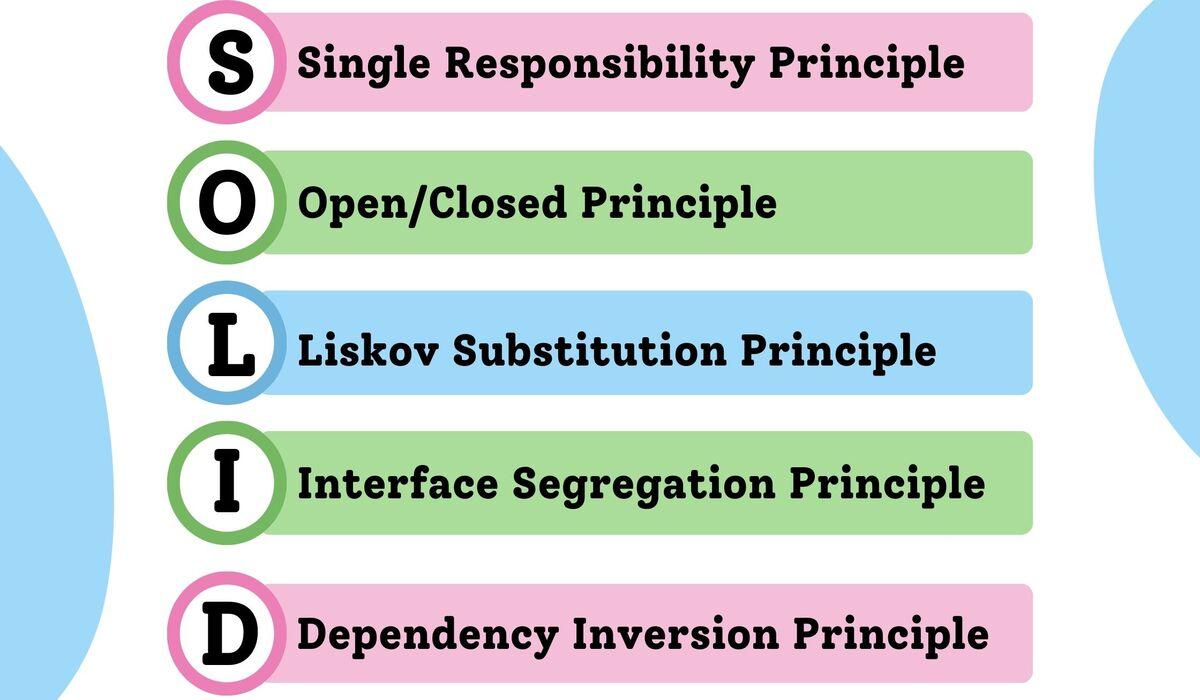In any software project, developers eventually face challenges related to scalability, maintainability and regression. One of the best ways to navigate these challenges is by adhering to the SOLID principles, a set of five foundational guidelines in object-oriented programming. These principles are especially useful in .NET and C# projects to keep the code clean, extensible and robust against change.
🧩 What Are the SOLID Principles?
The SOLID acronym stands for:
S: Single Responsibility Principle (SRP)
O: Open-Closed Principle (OCP)
L: Liskov Substitution Principle (LSP)
I: Interface Segregation Principle (ISP)
D: Dependency Inversion Principle (DIP)
Each of these principles helps developers design systems that are easier to understand and extend. Let’s take a brief look at each one.

🔹 Single Responsibility Principle (SRP)
Every class or method should have one and only one reason to change. This promotes better separation of concerns and leads to components that are easier to modify and test.
🔒 Open-Closed Principle (OCP)
Software entities should be open for extension but closed for modification. This means new behaviour should be added using inheritance or composition without changing the existing codebase. Following this principle leads to more stable and flexible systems.
🧬 Liskov Substitution Principle (LSP)
Objects of a superclass should be replaceable with objects of its subclasses without affecting the correctness of the program. LSP promotes reliability and consistency in class hierarchies.
🧩 Interface Segregation Principle (ISP)
Clients should not be forced to depend on interfaces they do not use. Instead of having large generic interfaces, it is better to split them into smaller and more specific ones. This results in cleaner and more maintainable contracts between systems.
🧷 Dependency Inversion Principle (DIP)
High-level modules should not depend on low-level modules. Both should depend on abstractions. This principle encourages decoupling by introducing interfaces or abstract classes between layers, which makes the system more flexible and easier to test.

🛠 Structure of This Principle Set
In the context of .NET and C#, SOLID principles are not just theoretical guidelines. They are practical tools that help structure code in real-world applications. This is especially useful before diving into design patterns, where adherence to SOLID principles significantly boosts the clarity and adaptability of your implementations.
In a typical learning structure:
You start with understanding the SRP to reduce responsibilities
Continue with OCP and LSP to make the system extensible and safe
Apply ISP to prevent bloated interfaces
Finish with DIP to remove tight coupling
🎯 Objectives You Should Aim For
By the end of applying these principles, you should be able to:
Recognize violations of each principle in existing code
Refactor code to improve adherence to SOLID principles
Design systems in .NET that are more modular, testable and scalable
📘 Conclusion
The SOLID principles are not tied to any specific programming language but they integrate perfectly into C# due to its object-oriented nature. Whether you are working with ASP.NET, WinForms or Console applications, these principles help you make better decisions in code design.
SRP helps you divide responsibilities logically
OCP and LSP ensure that extensions do not break existing code
ISP encourages modular and clear interfaces
DIP reduces dependencies and increases flexibility
When combined, these principles provide a strong foundation for professional-grade software architecture in the .NET ecosystem.
✅ Key Takeaways
SOLID principles help manage the complexity of growing software systems
All principles aim to reduce the negative impact of changes
These principles align perfectly with C# and .NET development practices